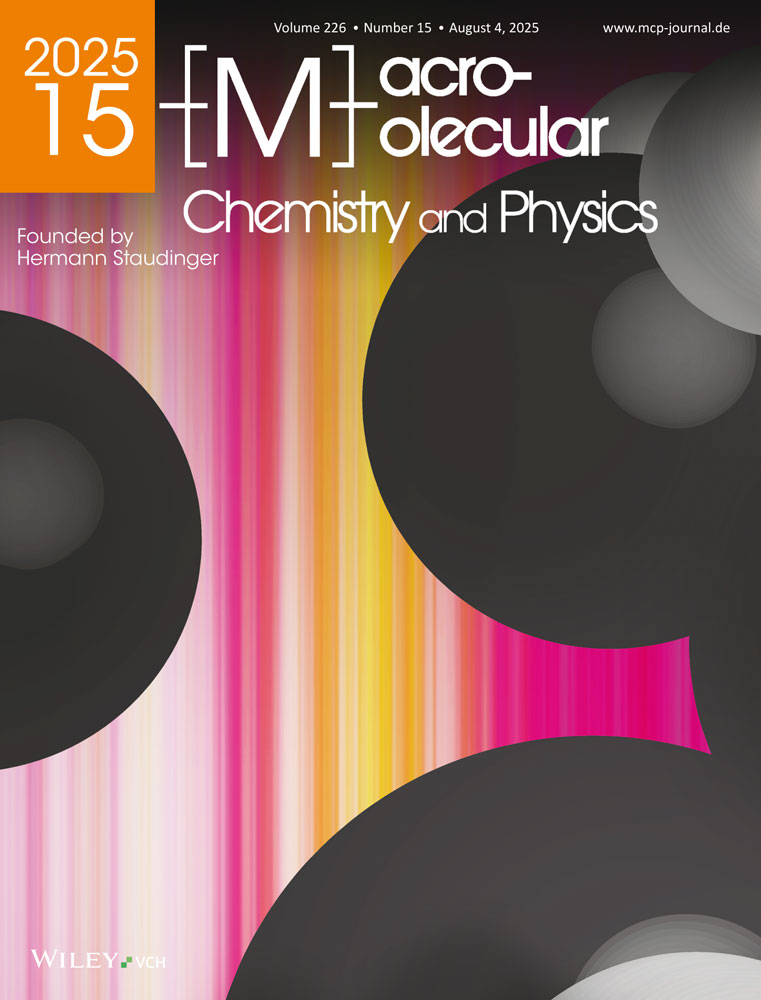Photopolymerization of methyl methacrylate in bulk and in pyridine diluted systems with pyridine-sulfur dioxide complex alone and in combination with benzoyl peroxide as photoinitiators
Abstract
It was found that the Py-SO2 complex (4–140 mmol·1−1) initiates the photopolymerization of methyl methacrylate (MMA) in bulk at 40°C, the initiator exponent, k /kt, and the monomer exponent being 0,30, 1,27·10−2 1·mol−1·s−1, and 1,00, respectively. The radical generation is followed by an in-situ initiator-monomer complexation reaction. The kinetics of the photopolymerization of MMA were also studied using the (Py-SO2)-complex (0,01–0,35 mol·1−1) in redox combination with benzoyl peroxide (BZ2O2) (2 − 110 mmol·1−1) as initiator in the presence of variable concentrations of pyridine (1 − 7 mol·1−1). The initiation depends on the concentrations of all the reactants in the system, and the reaction order with respect to either component of the redox pair is equal to 0,5 or reasonably less than 0,5, depending on whether or not the initiating component in question is present in the system in excess compared to its counterpart in the redox combination. Variable monomer exponents, largely dependent on [BZ2O2], characterize the redox photopolymerization process. The monomer exponent value, unity at [BZ2O2] = 0, progressively decreases with increasing [BZ2O2] (non-ideal kinetics). The rate enhancing effect of the solvent pyridine is more prominent at higher [BZ2O2]. The kinetic nonidealities in each case were further analyzed and interpreted in terms of (a) primary radical termination and (b) degradative initiator transfer. Relative effects of the variation of the level of dilution with pyridine were also analyzed.
/kt, and the monomer exponent being 0,30, 1,27·10−2 1·mol−1·s−1, and 1,00, respectively. The radical generation is followed by an in-situ initiator-monomer complexation reaction. The kinetics of the photopolymerization of MMA were also studied using the (Py-SO2)-complex (0,01–0,35 mol·1−1) in redox combination with benzoyl peroxide (BZ2O2) (2 − 110 mmol·1−1) as initiator in the presence of variable concentrations of pyridine (1 − 7 mol·1−1). The initiation depends on the concentrations of all the reactants in the system, and the reaction order with respect to either component of the redox pair is equal to 0,5 or reasonably less than 0,5, depending on whether or not the initiating component in question is present in the system in excess compared to its counterpart in the redox combination. Variable monomer exponents, largely dependent on [BZ2O2], characterize the redox photopolymerization process. The monomer exponent value, unity at [BZ2O2] = 0, progressively decreases with increasing [BZ2O2] (non-ideal kinetics). The rate enhancing effect of the solvent pyridine is more prominent at higher [BZ2O2]. The kinetic nonidealities in each case were further analyzed and interpreted in terms of (a) primary radical termination and (b) degradative initiator transfer. Relative effects of the variation of the level of dilution with pyridine were also analyzed.




